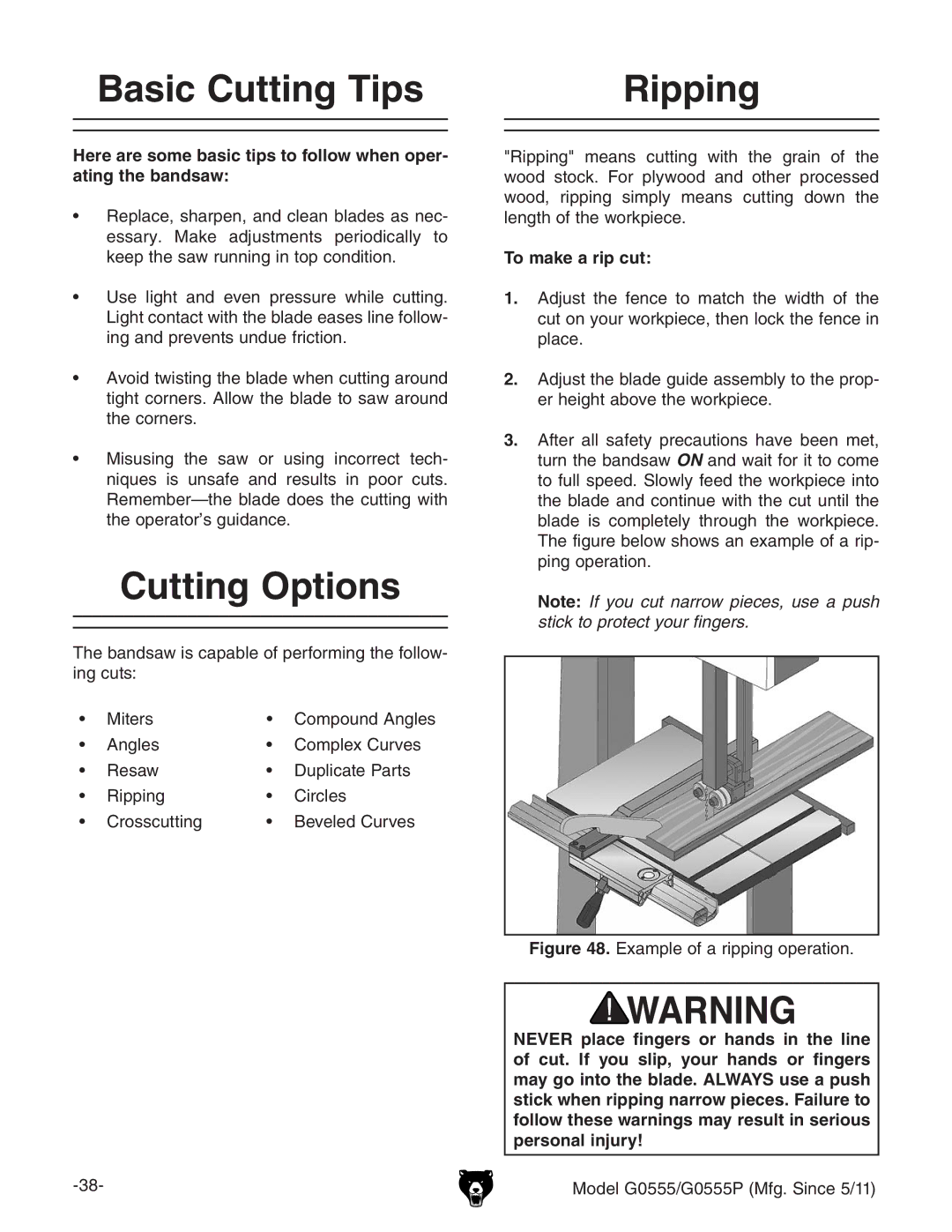
Basic Cutting Tips
Here are some basic tips to follow when oper- ating the bandsaw:
•Replace, sharpen, and clean blades as nec- essary. Make adjustments periodically to keep the saw running in top condition.
•Use light and even pressure while cutting. Light contact with the blade eases line follow- ing and prevents undue friction.
•Avoid twisting the blade when cutting around tight corners. Allow the blade to saw around the corners.
•Misusing the saw or using incorrect tech- niques is unsafe and results in poor cuts.
Cutting Options
The bandsaw is capable of performing the follow- ing cuts:
• | Miters | • | Compound Angles |
• | Angles | • | Complex Curves |
• | Resaw | • | Duplicate Parts |
• | Ripping | • | Circles |
• | Crosscutting | • | Beveled Curves |
Ripping
"Ripping" means cutting with the grain of the wood stock. For plywood and other processed wood, ripping simply means cutting down the length of the workpiece.
To make a rip cut:
1.Adjust the fence to match the width of the cut on your workpiece, then lock the fence in place.
2.Adjust the blade guide assembly to the prop- er height above the workpiece.
3.After all safety precautions have been met, turn the bandsaw ON and wait for it to come to full speed. Slowly feed the workpiece into the blade and continue with the cut until the blade is completely through the workpiece. The figure below shows an example of a rip- ping operation.
Note: If you cut narrow pieces, use a push stick to protect your fingers.
Figure 48. Example of a ripping operation.
NEVER place fingers or hands in the line of cut. If you slip, your hands or fingers may go into the blade. ALWAYS use a push stick when ripping narrow pieces. Failure to follow these warnings may result in serious personal injury!
Model G0555/G0555P (Mfg. Since 5/11)
